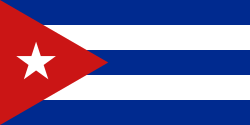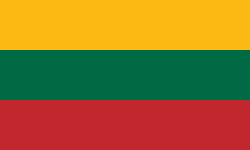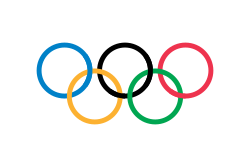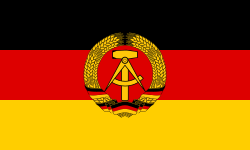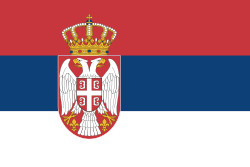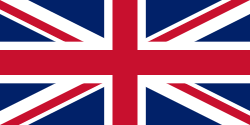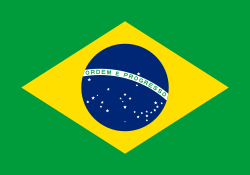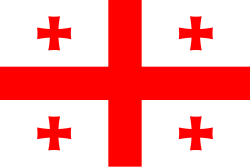Čon Ki-jong
| Čon Ki-jong | |
|---|---|
 | |
| Narození | 11. července 1973 (51 let) Čchongdžu |
| Alma mater | Kyonggi University |
| Povolání | judista |
| Některá data mohou pocházet z datové položky. | |
| Přehled medailí | ||
|---|---|---|
| zlato | LOH 1996 | střední váha |
| Mistrovství světa v judu | ||
| zlato | MS 1993 | polostřední váha |
| zlato | MS 1995 | střední váha |
| zlato | MS 1997 | střední váha |
Čon Ki-jong (korejsky 전기영), (* 11. červenec 1973 Čchongdžu, Jižní Korea) je bývalý reprezentant Jižní Koreje v judu. Je majitelem zlaté olympijské medaile.
Výsledky
| Turnaj | 1993 | 1994 | 1995 | 1996 | 1997 |
|---|---|---|---|---|---|
| 20 | 21 | 22 | 23 | 24 | |
| plstřd. v. | střední váha | ||||
| Olympijské hry | - | - | - | 1. | - |
| Mistrovství světa | 1. | - | 1. | - | 1. |
| Mistrovství Asie | dns | - | 1. | 3. | dns |
Podrobnější výsledky
Olympijské hry
| Rok | Kategorie | 1/64 | 1/32 | 1/16 | čtvrtfinále | semifinále | finále | |
|---|---|---|---|---|---|---|---|---|
| LOH 1996 | střední váha | volný los | výhra - (yus) | výhra - 0:30/uma | výhra - 1:39/son | výhra - 3:55/uma | výhra - 4:11/son |
Mistrovství světa
| Rok | Kategorie | 1/64 | 1/32 | 1/16 | čtvrtfinále | semifinále | finále | |
|---|---|---|---|---|---|---|---|---|
| MS 1993 | polostřední váha | volný los | výhra | výhra | výhra x:xx/son | výhra | výhra | |
| MS 1995 | střední váha | volný los | výhra- | výhra - | výhra - 0:09/son | výhra - 4:57/son | výhra - 2:46/son+osg | |
| MS 1997 | střední váha | volný los | výhra | výhra | výhra | výhra - waz/son | výhra - waz/shi |
Sportovní kariéra
Úspěchy
Čon byl fenomenální zápasník v judu. Byl kandidátem na zlatou medaili v každém turnaji, do kterého nastoupil. Má na svém kontě desítky turnajových titulů.
Zajímavosti
- Tokui-waza: morote (drop) seoi-nage
- Styl: fyzický, útočný, mentální
Jeho judo se vyznačovalo strojově přesnou technikou seoi-nage. Z důvodu ztráty motivace, ukončení vysoké školy a chronickým zdravotním problémům vydržel na vrcholové úrovni bojovat pouze pět let.
V roce 1994 měl problémy s váhou, proto přišel o účast na Asijských hrách - pro asiaty prestižní podnik. V roce 1995 zlomil zápas s Kanaďanem Gillem až v posledních sekundách, když 30s před koncem prohrával na wazari.
Rivalové
- Jun Tong-sik
- Hidehiko Jošida
- Mark Huizinga
- Nicolas Gill
Reference
Externí odkazy
- Čon Ki-jong v databázi Olympedia (anglicky)
- Judo FactFiles
Média použitá na této stránce
Olympic Rings without "rims" (gaps between the rings), As used, eg. in the logos of the 2008 and 2016 Olympics. The colour scheme applied here was specified in 2023 guidelines.
Olympic Rings without "rims" (gaps between the rings), As used, eg. in the logos of the 2008 and 2016 Olympics. The colour scheme applied here was specified in 2023 guidelines.
Flag of Serbia and Montenegro, was adopted on 27 April 1992, as flag of Federal Republic of Yugoslavia (1992-2003).
Flag of Canada introduced in 1965, using Pantone colors. This design replaced the Canadian Red Ensign design.
The flag of the Dominican Republic has a centered white cross that extends to the edges. This emblem is similar to the flag design and shows a bible, a cross of gold and 6 Dominican flags. There are branches of olive and palm around the shield and above on the ribbon is the motto "Dios,Patria!, Libertad" ("God, Country, Freedom") and to amiable freedom. The blue is said to stand for liberty, red for the fire and blood of the independence struggle and the white cross symbolized that God has not forgotten his people. "Republica Dominicana". The Dominican flag was designed by Juan Pablo Duarte, father of the national Independence of Dominican Republic. The first dominican flag was sewn by a young lady named Concepción Bona, who lived across the street of El Baluarte, monument where the patriots gathered to fight for the independence, the night of February 27th, 1844. Concepción Bona was helped by her first cousin María de Jesús Pina.
The flag of the Dominican Republic has a centered white cross that extends to the edges. This emblem is similar to the flag design and shows a bible, a cross of gold and 6 Dominican flags. There are branches of olive and palm around the shield and above on the ribbon is the motto "Dios,Patria!, Libertad" ("God, Country, Freedom") and to amiable freedom. The blue is said to stand for liberty, red for the fire and blood of the independence struggle and the white cross symbolized that God has not forgotten his people. "Republica Dominicana". The Dominican flag was designed by Juan Pablo Duarte, father of the national Independence of Dominican Republic. The first dominican flag was sewn by a young lady named Concepción Bona, who lived across the street of El Baluarte, monument where the patriots gathered to fight for the independence, the night of February 27th, 1844. Concepción Bona was helped by her first cousin María de Jesús Pina.
Variant version of a flag of Japan, used between January 27, 1870 and August 13, 1999 (aspect ratio 7:10).
Olympijská vlajka
Georgian flag in Pantone MS.
Flag of Iran. The tricolor flag was introduced in 1906, but after the Islamic Revolution of 1979 the Arabic words 'Allahu akbar' ('God is great'), written in the Kufic script of the Qur'an and repeated 22 times, were added to the red and green strips where they border the white central strip and in the middle is the emblem of Iran (which is a stylized Persian alphabet of the Arabic word Allah ("God")).
The official ISIRI standard (translation at FotW) gives two slightly different methods of construction for the flag: a compass-and-straightedge construction used for File:Flag of Iran (official).svg, and a "simplified" construction sheet with rational numbers used for this file.
This is the national flag of Belgium, according to the Official Guide to Belgian Protocol. It has a 13:15 aspect ratio, though it is rarely seen in this ratio.
Its colours are defined as Pantone black, Pantone yellow 115, and Pantone red 032; also given as CMYK 0,0,0,100; 0,8.5,79,0; and 0,94,87,0.Flag of Serbia and Montenegro, was adopted on 27 April 1992, as flag of Federal Republic of Yugoslavia (1992-2003).
Flag of South Korea from 21 February 1984 to 15 October 1997, when the exact colors were specified into their shades.
Autor:
Gwangju Munhwa Broadcasting Corporation (official YouTube account)
Verification: linked on the left of the official website (first icon from the left), Licence: CC BY 3.0유도스타 전기영 유도 꿈나무 만나다 (전기영)



